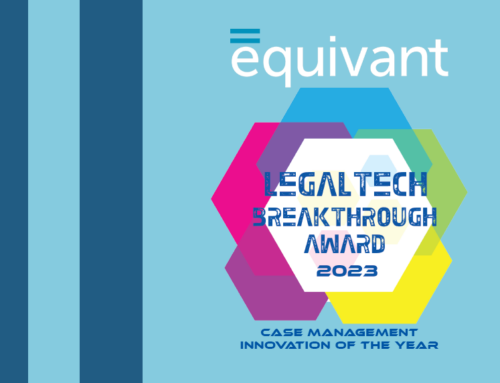Data Drives You.
So Where Are You Headed?
So Where Are You Headed?

“The accuracy and completeness of criminal history record information—the quality of data in those records—has emerged as perhaps the most significant information issue confronting the criminal justice community.”
That is the first line in a report issued by the Bureau of Justice Statistics in … 1985. While the ways we collect, record, process, and analyze data have changed substantially in the past 35 years, the core issue remains the same: Data quality is central to justice.
Using data to support decisions is critical at every single stage of justice, and we have to be able to rely on the quality of the data we’re using to make the best decisions possible.
What is data quality?
Data quality in the justice system means the data your team is gathering, using, and sharing is:1
- Accurate – Each piece of information is correct and reliable, from the spelling of a person’s name to the exactness of dates and other details.
- Complete – Nothing is missing or omitted. It’s worth taking an extra moment to check over data you’re gathering and make sure that everything, even something seemingly trivial like an address, is included.
- Consistent – Data points are presented in the same format across platforms. This can be quite challenging as agencies are using a variety of systems, but integrator tools can help facilitate information exchanges in a way that standardizes data formatting.
- Accessible – Data can be retrieved easily and quickly when it’s needed. Your documentation may be accurate, complete, and consistent, but if your team and your partner agencies can’t easily get to it, it’s useless.
- Timely – Information entered is as up-to-date as possible, especially when multiple parties (i.e., judge, clerk, attorney, social worker, etc.) are all actively working on a case.
Why is data quality important?
A misspelled name results in a judge not seeing a defendant’s full criminal history and releasing a high-risk individual pre-trial. A wrongful arrest was made because the recall of an arrest warrant wasn’t processed promptly. A child was abducted by a noncustodial parent because the terms of a restraining order weren’t entered completely.
Failures of accuracy, completeness, consistency, accessibility, and timeliness have real-life consequences, especially in the justice system.
When arrest data comes from the police, charging data comes from prosecutors, sentencing data comes from courts, and supervision data comes from probation/parole, the opportunities for integration—and the opportunities for error—are astounding. A single pipeline from one source to another isn’t sufficient.
How can my agency adopt better practices?
Getting better about data quality is about coming out of your silo and embracing a culture of data-driven decision-making. We talk about evidence-based practice in criminal justice to the point that the phrase is almost meaningless, but think for a moment what it would look like if your agency made all of its important decisions based on data, not just the ones related to justice-involved individuals.
Jane Wiseman, CEO of the Institute for Excellence in Government, advocates for better educating employees at all levels of the importance of data quality.
“We have a huge gap in terms of the American worker’s ability to manage numbers, think with numbers, and make good decisions based on numbers,” Wiseman said. “And that’s connected to data quality, because if I don’t really understand the value of numbers, why am I going to do a good job on the front end with the data entry? It’s the data capture at the front end where we have the quality issues.”
Wiseman advocates for a four-phased process for improving your agency’s data maturity:
- Publish your data. Making data available to others, sharing it outside your agency, and letting the collective strength of your partnerships help you make your data better is essential.
- Polish your data. There is always room for improvement – 100% data quality isn’t realistic. Start where you are, and make it better.
- Analyze your data. Once you have a high volume of high-quality data, you can really put it to work.
- Optimize your data. Your team should be trained not only to use data, but to embrace it and be enthusiastic about it. When you reach this fourth stage, every decision should be driven by data.
As renowned British economist Ronald H. Coase reportedly said, “If you torture the data long enough, it will confess to anything.” When we look at our data through the narrow lens of what we want from it, we’ll get it, but at what cost? Ensuring our data quality and training our teams to value and use it properly are paramount.
Effectively gathering, storing, sharing, and using data starts with having the right technology. Our JWorks CMS solution can help.
If you struggle with data quality, call us. A lot has changed in 35 years, but the need for quality data in criminal justice has not. Wherever you are in your data journey, we can help.
1 Adapted from Data Science Central, 2019





